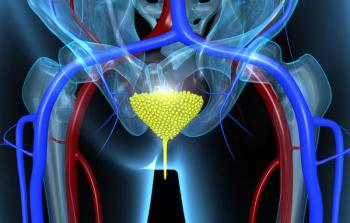
Miami Breast Cancer Conference® Abstracts Supplement
- 41st Annual Miami Breast Cancer Conference® - Abstracts
- Volume 38
- Issue 4
- Pages: 66-67
55 Language as a Barrier to Deep Inspiration Breath Hold (DIBH) Radiation Therapy for Left Breast Cancer
Background
Deep inspiration breath hold (DIBH) is a radiation therapy (RT) technique often used for adjuvant treatment of left breast cancer to reduce radiation dose to organs such as the heart and lungs. DIBH can reduce mean heart dose by nearly 50% (absolute reduction of ≈1 Gy), corresponding to approximately 7% relative risk reduction for RT-induced ischemic heart disease.
Language is a potential barrier to DIBH for non–English language (NEL)–speaking patients, because patients must understand and follow commands (eg, “breathe in,” “hold your breath”) from their radiation therapist. We investigated the relationship between the use of a translator at the initial radiation oncology consultation and the receipt of DIBH RT for patients with left breast cancer.
Methods
A retrospective chart review included patients diagnosed with left breast cancer treated with adjuvant curative-intent RT at Maimonides Cancer Center, a safety-net hospital serving a diverse population in Brooklyn, New York, from October 2019 to June 2023. Eligible patients were reviewed for the use of a translator at the initial consultation (and if used, language translated), age, racial/ethnic identification, and clinicopathologic characteristics. Statistical analysis was performed using χ2, ANOVA, and logistic regression tests, as appropriate, in SAS 9.4.
Results
Out of 488 patients who were clinically eligible for DIBH, 158 (32%) received DIBH. Patients who received DIBH were younger (54 ± 12 years vs 64 ± 13 years, P <.0001) and more likely estrogen receptor (ER) negative (27% vs 17%, P < .05). There was no difference between groups by race/ethnicity, or progesterone receptor/HER2 status. Of 330 patients who did not receive DIBH, 110 (33%) required a translator at consultation. Mandarin (30%), Russian (27%), Cantonese (20%), and Spanish (16%) were the most common NELs translated. Patients who used a translator were 2.8 times less likely to receive DIBH than those who did not (95% CI, 1.7-4.9, P < .0001). Statistical significance remained after multivariate analysis controlling for age and ER status (P < .0001).
Conclusions
Although other factors may also limit the use of DIBH (eg, inability to hold the breath or lack of improvement in heart/lung RT dose with DIBH), the use of a translator significantly predicted whether a patient with left breast cancer received DIBH. Improved communication methods may help NEL-speaking patients receive the benefits of DIBH. Our group is now working to develop prerecorded, translated instructions to allow NEL speakers to receive DIBH.
Articles in this issue
Newsletter
Stay up to date on recent advances in the multidisciplinary approach to cancer.






















































































